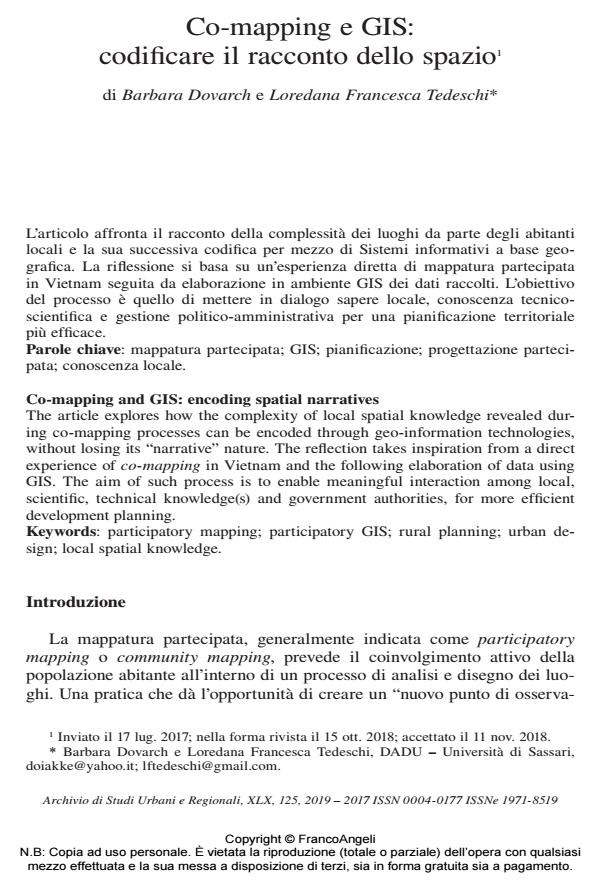Co-mapping and GIS: encoding spatial narratives
Journal title ARCHIVIO DI STUDI URBANI E REGIONALI
Author/s Barbara Dovarch, Loredana Francesca Tedeschi
Publishing Year 2019 Issue 2019/125
Language Italian Pages 26 P. 68-93 File size 361 KB
DOI 10.3280/ASUR2019-125004
DOI is like a bar code for intellectual property: to have more infomation
click here
Below, you can see the article first page
If you want to buy this article in PDF format, you can do it, following the instructions to buy download credits

FrancoAngeli is member of Publishers International Linking Association, Inc (PILA), a not-for-profit association which run the CrossRef service enabling links to and from online scholarly content.
The article explores how the complexity of local spatial knowledge revealed during co-mapping processes can be encoded through geo-information technologies, without losing its "narrative" nature. The reflection takes inspiration from a direct experience of co-mapping in Vietnam and the following elaboration of data using GIS. The aim of such process is to enable meaningful interaction among local, scientific, technical knowledge(s) and government authorities, for more efficient development planning.
Keywords: Participatory mapping; participatory GIS; rural planning; urban design; local spatial knowledge.
- Triggering Active Communities for Cultural Creative Cities: The “Hack the City” Play ReCH Mission in the Salerno Historic Centre (Italy) Maria Cerreta, Gaia Daldanise, Ludovica La Rocca, Simona Panaro, in Sustainability /2021 pp.11877
DOI: 10.3390/su132111877
Barbara Dovarch, Loredana Francesca Tedeschi, Co-mapping e GIS: codificare il racconto dello spazio in "ARCHIVIO DI STUDI URBANI E REGIONALI" 125/2019, pp 68-93, DOI: 10.3280/ASUR2019-125004